#stephen strait
Explore tagged Tumblr posts
Text


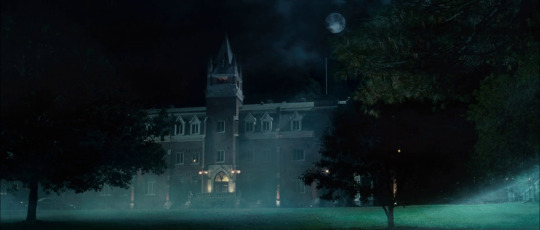
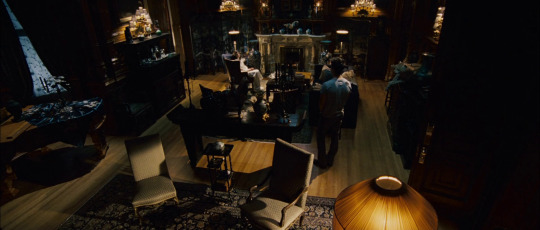
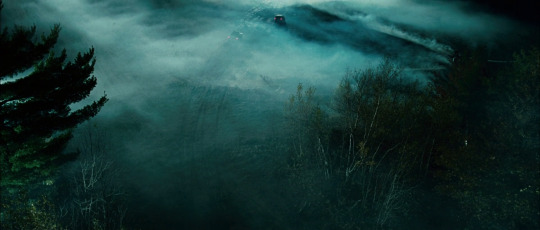







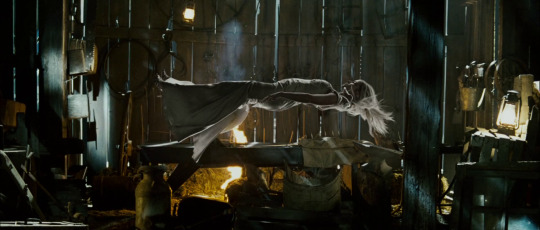
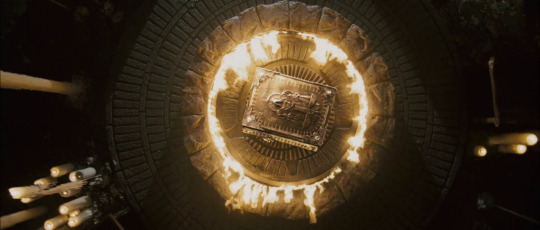
THE COVENANT (2006)
Director: Renny Harlin Cinematography: Pierre Gill
#the covenant#renny harlin#steven strait#sebastian stan#taylor kitsch#chace crawford#laura ramsey#jessica lucas#toby hemingway#stephen mchattie#2000s#2000s movies#teen horror#horror#2000s horror#2000s horror movies#horror movies#2000s aesthetic#cinematography#movie screencaps#movie screenshots#movie frames#film screencaps#film screenshots#film frames#screencaps#screenshots
62 notes
·
View notes
Text


J.D. Souther Dies at 78
- Singer/songwriter co-founded Souther-Hillman-Furay Band; collaborated with Eagles, Linda Ronstadt, Bob Weir and others
J.D. Souther, the singer/singwriter who co-founded the Souther-Hillman-Furay Band and collaborated with Eagles, Linda Ronstadt, Bob Weir and others, has died at 78.
“On behalf of Team J.D., we are sad to share this news with all of you,” read a post on Souther’s social media pages that linked to a Los Angeles Times story that did not specify a date or cause of his death.
“J.D. Souther was a friend, and so talented,” Carole King said in a statement. “We’ll miss him.”
The co-writer of such songs as the Eagles’ “New Kid in Town” and “Heartache Tonight” and Ronstadt’s “Faithless Love,” Souther also contributed songs to Bonnie Raitt, James Taylor, George Strait and the Dixie Chicks.
“I knew J.D. for 54 years and we were best of friends all that time,” fellow songwriter Jack Tempchin said. “It really hurts to lose him.”
In 1973, Souther teamed with former Byrd/Flying Burrito Brother Chris Hillman and Buffalo Springfield co-founder Richie Furay to form their self-titled trio.
“J.D. was one of contemporary music’s most-gifted songwriters,” Furay said in a statement. “I am very thankful for the time we had together on this part of life's journey.”
Souther kept working through the decades, recently co-writing and appearing on stage with Weir and preparing a solo tour for later this year and another with Karla Bonoff in 2025.
“JD was a remarkable talent, and his contributions to music are immeasurable,” Stephen Bishop said. “He will be sorely missed, but his legacy will live on in the hearts of those who knew and loved him.”
9/18/24
#j.d. souther#eagles#linda ronstadt#bob weir#grateful dead#souther hillman furay band#chris hillman#flying burrito brothers#the byrds#richie furay#buffalo springfield#bonnie raitt#james taylor#the chicks#george strait#jack tempchin#stephen bishop#karla bonoff#the los angeles times#carole king
5 notes
·
View notes
Text




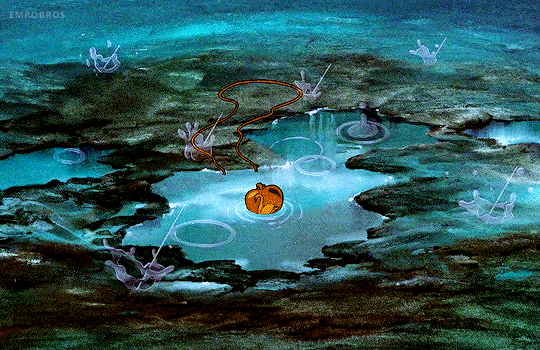






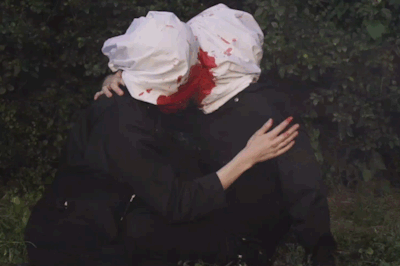












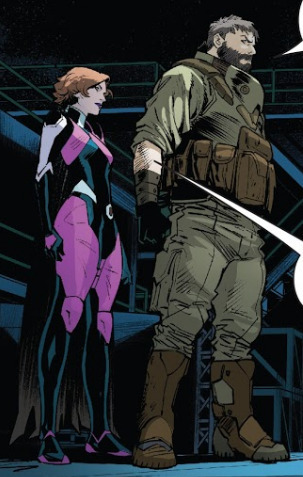



#boom! comics power rangers#web weaving#theme: the line from antagonists to allies to partners to something more takes 20 years#World of the Coinless Farkas Bulk Bulkmeier#Ranger Slayer Kimberly Hart#mighty morphin power rangers#@n3rv0uss7st3m#@dire-straits-fn8ic#@alterouslyinlove#@long-distance-love#vita sackville-west#julie buntin#catherynne m. valente#melissa faliveno#@brycebowyn#the swan princess#the lion king#stephen king#olivia gatwood#sylvia plath#@kazthropology
9 notes
·
View notes
Text
Happy, EVIL Halloween, Halloween, Halloween. Happy, EVIL Halloween, Silver Shamrock! "Halloween III: Season of the Witch" reviewed! (Via Vision / Limited Edition Blu-ray)
“Halloween III: Season of the Witch” Available on Limited Edition Blu-ray from Via Vision! Just days before Halloween, a man stumbles hurt and delusional rantings into the hospital of Dr. Daniel Challis. Clutching a Halloween mask to his chest, Challis figures the man to be crazy before stabilizing his vitals for rest but when the man is heinously murdered in his hospital room and the murderer…

View On WordPress
#1982#Al Berry#Alan Howarth#barry Bernadi#blu-ray#Dan O&039;Herliy#Debra Hill#Escape from New York#Essex SMith#Garn Stephens#halloween#Halloween II#Halloween III#Halloween Masks#horror#Irwin Yablans#Jadeen Barbor#Joe Dante#John Carpenter#Joseph Wolf#Lee Gambin#limited edition#Mad Magazine#Michael Currie#michael myers#Nigel Kneale#Ralph Strait#sci-fi horror#science ficton#Sean Clark
1 note
·
View note
Text
Halloween III: Season of the Witch (1982)
#TomAtkins #StaceyNelkin #DanOHerlihy #MichaelCurrie #RalphStrait #JadeenBarbor #BradSchacter #GarnStephens #NancyKyes #JonathanTerry #AlBerry #WendyWessberg #EssexSmith #MaidieNorman
Change is often good, and sometimes it can never be too late to change, even if it means stepping out of your comfort zone to do so, no matter what anybody thinks. In 1982, offering audiences a little respite from the relentless attack of The Shape, got the third franchise instalment that was a lot different from the first two. In Halloween III: Season of the Witch. The film finds fresh ground…
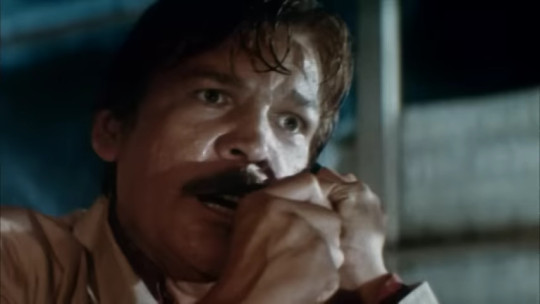
View On WordPress
#1982#Al Berry#Brad Schacter#Dan O&039;Herlihy#Essex Smith#film#films#Garn Stephens#horror#Jadeen Barbor#Jonathan Terry#Maidie Norman#Michael Currie#Movies#Nancy Kyes#positive#Ralph Strait#review#Stacey Nelkin#Tom Atkins#Wendy Wessberg
1 note
·
View note
Text
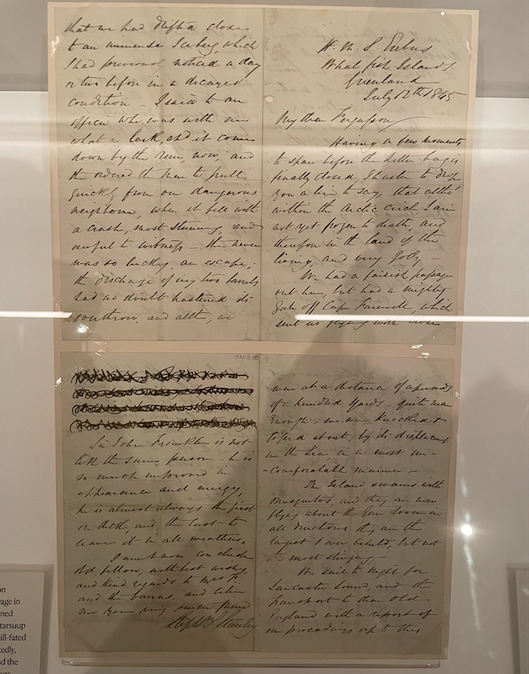
Letter from Dr. Stanley to Dr. Fergusson written on board HMS Erebus July 12, 1845- Awe of the Arctic Exhibit 2024 NYPL
Transcript: My Dear Fergusson, having a few moments to spare before the letter bag is finally closed, I hasten to drop you a line to say that, although within the Arctic Circle , I'm not yet frozen to death and therefore in the land of the living and very jolly. We had a fairish passage out here but had a mighty gale of Cape Farewell, which sent us flying with closed topsails and courses to Cape Desolation, where in spite of the dismal name we found comfort. There's smooth water and a moderate breeze. These islands, and in fact, the whole of this western coast of Greenland, is the most barren and uninviting I ever beheld.
Some of the land is very high and serrated and has the appearance of being volcanic. On the bare rocks, large quantities of tripe-de-roche may be gathered, but as we were not reduced like our excellent captain on a former occasion to such a means of subsistence, no one I could find tried its qualities as a nutrient. We are completely surrounded with icebergs, some of them upwards of 200 feet high. They are, however, from the extreme heat disappearing fast and by their constant disruption, almost frightening your very life out of you.
I and a boat crew had a very narrow escape the other day out shooting. I had just fired and killed an eider duck when I observed that we had drifted closer to an immense iceberg, which I had previously noticed a day or two before in a decayed condition. I said to an officer who was with me "What luck it should come down by the sun!" And then ordered the men to pull quickly from our dangerous neighbor when it fell with a crash. Most stunning and awful to witness. There never was so lucky an escape. The discharge of my two barrels had no doubt hastened its overthrow. And although we were at a distance upwards of 100 yards, quite near enough we were knocked and tossed about by its displacement in the sea in a most uncomfortable manner.
The island swarms with mosquitoes and they are now flying about the gun room in all directions. They are the largest I ever beheld but not the most stinging. We sailed tonight for Lancaster Sound and the transport to dear old England with a report of our proceedings up to this period. At this season of the year, in this latitude, as you are aware there is no darkness. The sun never dips below the horizon. The nights I have there for devoted to shooting and the day to skinning and preserving the specimens I have killed. Since our arrival I have not slept more than 2 or 3 hours in 24. Goodsir is working harder than medusas and desires kindly to be remembered to you.
We are all sanguine and getting through the barrier into Beechey straits this year. Every one of the native Eskimos say this is the most open season they ever remember. And on the strength of our prospects I and the other officers have ordered letters to be directed to us at Panama and Kotzebue. The latter place will, of course, be the first port we shall make when we get through.
I have not a single man on the list and I have not had for several days. Sir John Franklin is not like the same person. He is so much improved in appearance and energy. He is almost always the first on deck and the last to leave it in all weathers. I must conclude now, old fellow, with best wishes and kind regards to Mrs. F and the bairns.
And believe me, your very sincere friend, Stephen S. Stanley. I had intended to have written to Fortnum and Masons. Pray tell them like a good soul that we are delighted with everything they furnished us and the members of the mess unanimously declare them to be trumps and we should be sorry to return before we have consumed all their good things.
#awe of the arctic#stephen stanley#franklin expedition#this letter is so unintentionally ominous#big thanks to the exhibit for reading the letter out loud in the guided tour recording
116 notes
·
View notes
Text
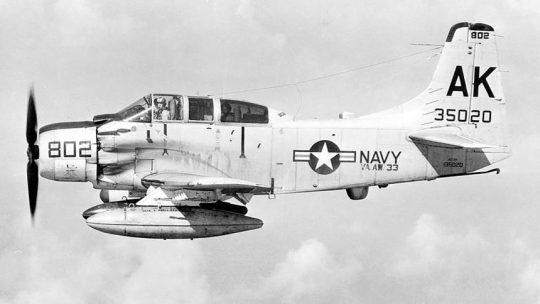
The AD-5N ‘Skyraider’ and Its Little-Known Nuclear Role in the Cold War
David Cenciotti
AD-5N
In late 1958, during heightened tensions in the Taiwan Strait, Skyraider pilots were prepped for nuclear strike missions. They spent tense hours at night, seated in their aircraft and ready for catapult launch with nuke bombs, before the mission was ultimately called off…
The Douglas A-1 Skyraider, also known as the “Spad,” was a legendary single-engine aircraft, as well as the last propeller U.S. Navy attack aircraft to disappear from the decks of the Navy’s aircraft carriers.
In late 1958, during heightened tensions in the Taiwan Strait, Skyraider pilots were prepped for nuclear strike missions. They spent tense hours at night, seated in their aircraft and ready for catapult launch with nuke bombs, before the mission was ultimately called off…Nuclear attack Skyraider
Renowned for its rugged design and long endurance, the Skyraider had an exceptional payload capacity: even when it carried its full internal fuel of 2,280 pounds, a 2,200-lb torpedo, two 2,000-lb bombs, 12,5 inch rockets, two 20 mm guns and 240 pounds of ammunition, the Skyraider was still under its maximum gross weight of 25,000 pounds.
Conceived during World War II, the Skyraider saw extensive service during the Korean and Vietnam Wars, excelling in close air support, search and rescue, and interdiction roles. However, its ability to carry a diverse array of munitions, including conventional bombs, rockets, and even torpedoes, made it a versatile platform.
AD-5N
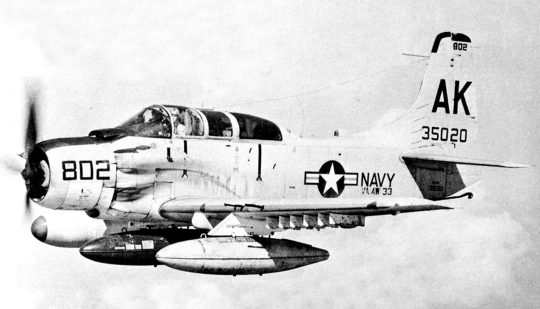
Douglas AD-5N Skyraider of VA(AW)-33 Det.42 circa in 1958 (Image credit: U.S. Navy)
Among its variants, the AD-5N was a specialized version of the Skyraider, featuring a widened fuselage to accommodate a crew of four and advanced avionics for precision operations in challenging conditions.
Nuclear attack Skyraider
At the end of the 1950s, pilots of VA(AW)-33 flew AD-5N aircraft off the USS Essex, primarily training for nuclear strike missions. They specialized in low-level, long-range operations, using tech like the Bureau of Ordnance Atomic Rocket (BOAR) rocket and the Low Altitude Bombing System (LABS) bombing system.
Flying just 50 feet above water or skimming treetops on land, missions were top-secret, with each pilot assigned a unique target. Crews of three or four included electronics techs, practicing whenever budget allowed, both in the U.S. and Europe. Real missions were essentially one-way, though their rocket-powered weapon offered a slight survival edge.
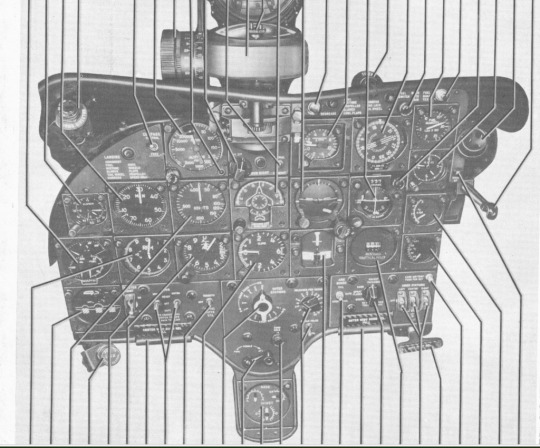
The pilot’s side panel on the AD-5N aircraft. The LABS timer light can be seen on top of the panel on the right side and the NAV/LABS cross pointer instrument is also on the right side, about half way down. (Image via Stephen Miller)
Stephen Miller is a retired electrical engineer, lifelong aviator who spent some time as a Naval Aviator. After flight training, he was assigned to VA(AW)33 in Atlantic City, NJ, flying AD-5N. Here’s what he wrote to us about his time flying the low level long range nuclear weapon delivery mission with the Skyraider.
I joined the Navy right after graduating from Miami of Ohio with a BS in business and was just a few hours short of a commercial certificate at that time. After flight training, I was assigned to VA(AW)33 flying AD-5N in 1956.
In 1957-1958 various detachments consisting of four aircraft were assigned to their respective carriers and were involved in the attendant cruises from time to time. Ours was the USS ESSEX, CVA9. This was strictly during the cold war, between the Korean war and Vietnam.
Our primary mission was low level long range nuclear weapon delivery. This consisted of 50 ft over water and about 150 ft over land (treetop level). All navigation was done using pilotage/dead reckoning and was practised both here and in Europe. There were no radars at that time that could detect a low flying aircraft, due to ground clutter. Our long range cruise airspeed was 160 kts and we’d wait for the engine to sputter before switching back from an empty drop tank to the main. We typically used one or two crewmen to help with the navigation, the same guys (ET’s, Electronic Technicians) who maintained the equipment.
We also had a ground mapping radar, the APS-31, a pod-mounted wing unit.
In mid 1957 we attended a special weapons school in Norfolk VA which covered the operation of the weapon, the Bureau of Ordnance Atomic Rocket (BOAR) and the Low Altitude Bombing System (LABS). They had a working BOAR in the classroom, minus the warhead and we learned how to connect and use the test box to check it out. I was scheduled to make a test run to a simulated target with a live BOAR which had the 1000 lbs of HE (high explosive) used to detonate the nuclear core, but without the core installed. This was ultimately cancelled, but the exercise proceeded without employing the BOAR.
The delivery sequence worked as follows: The LABS contained a timer, accelerometer and a precise gyro heading reference. Just before reaching the IP (initial position for starting the final run toward the release point), the aircraft had to be at max speed (about 240 kts), full or “military” power, limited to five minutes, on heading and maintaining a stable treetop altitude, with the weapon armed.
Upon passing the IP a button on the stick was pressed and the timer would start for the 2-3 minute run. Simultaneously, the vertical nav indicator normally used for VOR/TACAN/ILS LOCALIZER was switched to provide the precise heading reference. At the same time a short panel light and headset tone were activated as well.
When the timer ran out, another short light/tone indicated the aircraft had reached the point to start the launch maneuver. The pilot would then pull and hold the trigger while pulling the nose up in a precise manner using the accelerometer. The horizontal nav indicator normally used for the ILS GLIDESLOPE would switch to this function and initially drop down; it was up to the pilot to raise the nose smoothly to bring the indicator to the center (horizontal) position. This would insure the right amount of “g’s” to produce the desired weapon trajectory upon release, which was automatic when the release attitude was reached.
The BOAR was blown away from the aircraft by the equivalent of four shotgun shells and had a pigtail attached to the airframe which would stretch out and then pull out of the back of the weapon, starting the rocket motor. This weapon had a top speed in the 400kt range and covered a distance of about 7.5 miles.
At this point the AD-5N was entering the initial entry into a loop but was too slow to make it over the top, requiring a wing over to end the maneuver, pickup speed and reverse direction. This was a modified version of a maneuver called a “half Cuban 8”, in this case known as the “idiot loop”.
For propeller driven aircraft the completion of the loop was only possible by a more capable airplane like the single seat AD6, for example. Use of a rocket powered weapon would allow the aircraft to escape the blast zone but the enormous shock wave would have unpredictable results. Some nuclear weapons were unpowered bombs, such that no escape from the blast was possible if delivered in this manner by a propeller driven aircraft. No one was expected back from these missions. Fortunately it never became necessary.
On a Mediterranean cruise during the 1957-58 period we did have a night drill to get a live BOAR ready for launch, but that’s as far as it went, at least for our squadron. At one point we were each assigned top secret targets following background checks for this purpose. These targets were planned and the charts supplied by some unknown source, at least to us, and the zig-zag routes highlighted as well. My best guess is this came from the Pentagon. They were kept in a locked safe with individual combinations. We were required to study our respective routes in our spare time and no one knew what anyone else’s target was. These were strictly visual day missions, though we would probably launch at night in time to reach the beach by daylight. We did have the advantage of radar assist, at least to pick out prominent features like lakes/rivers etc, as well as crewmen to help look for check points. The biggest problem we faced was the fact that the charts over enemy territory were known to contain errors. This only added to the difficulty of attempting to navigate using pilotage/dead reckoning at treetop level in the first place!
In late 1958 during the Quemoy/Matsu island crisis, we were in that area and a friend of mine was there as well with a Pacific fleet squadron flying AD6’s. He sat for two hours on a dark night in his aircraft, hooked up to the catapult, ready to launch with a nuke until they finally called it off. I doubt that this is widely known. That nuclear bomb was a Mark 7 unpowered device. It was a standard nuclear bomb of that time, the yield determined by the size of the nuclear core. A typical mid range core was 18-22 kilotons, about the same as the one dropped on Nagasaki.
Other Navy/Air Force squadrons flying various types of aircraft (primarily jets) had other delivery methods as well. This was our particular experience.
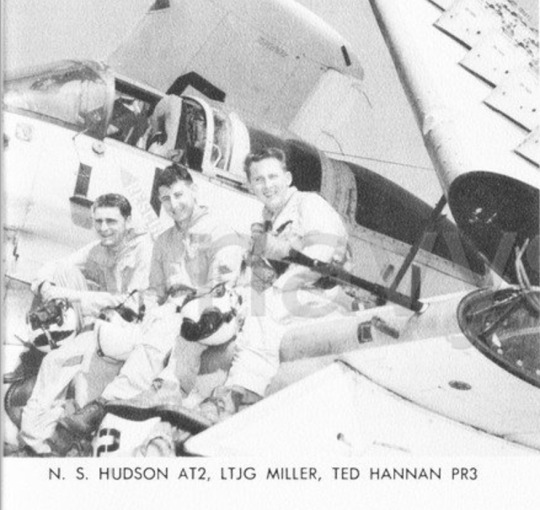
LTJG Miller (via Stephen Miller)
After his tour as a naval aviator Stephen spent a few years in aviation doing charter and flight instructor work flying all the usual single/multi engine aircraft, a stint with Mohawk Airlines flying Convair 240/440 aircraft and ultimately had his own business as an FBO.
I eventually left the aviation industry to pursue a degree in electrical engineering, though I continued flying part time, graduating from Umass Dartmouth in 1967. My career as an engineer subsequently encompassed working for a variety of employers in both design and management, commercial and military and for both large and small firms. My duties often included serving as company pilot as well. One such firm was an autopilot manufacturer which introduced me to that particular industry as well.
In later life I spent some time with the CAP, but now at age 90 I haven’t been current for about 20 years. Hopefully, the information I’ve submitted will be of some historical value to those interested in the Cold War period of the 1950s.
@The Aviationist.com
23 notes
·
View notes
Text
The Caravel
The caravel began as a fishing boat with Latin sails in Portugal in the 13th century. At the beginning of the 14th century, before the time of the great Portuguese discoveries, the same name was used for a two-masted, Latin-sailed merchant ship with forecastle and hut for Mediterranean and coastal voyages. After land links to India had been severed by Turkish occupations and the Mediterranean voyage had lost its importance, Portugal became the nation that intensively sought a southern sea route to India. Prince Henry, known as Henry the Navigator (1394 to 1460), was a far-sighted promoter of shipbuilding and shipping. He deserves credit not only for initiating the further development of the caravel, but also for founding a state-supported observatory and a navigation school at a very early stage.
From the two-masted caravels, the relatively slender three-masted Latin sail caravels (caravela latina) emerged, which were better suited for longer journeys and had exclusively Latin sails on all three masts. A typical feature, to which the name of the ship type is also attributed, was the Kraweel construction, in which the ship's planks butted together directly at their longitudinal seams, so that smooth surfaces were created on the outside and inside of the ship's side walls. The seams were caulked so that the ships took little water even in a swell. In addition, the smooth outer skin could be better protected against fouling and worm damage. Another feature of the caravel was the relatively high stern.

A caravela latina, by Stephen Biesty (x)
Under the influence of and in continuation of Roman traditions with divided square sails, the development of the three-masted square-rigged caravel (caravela redonda) took place during the 15th century, with square sails on the bowsprit, foremast and mainmast. Above the mainsail on the mainmast was the topsail. Because of their favourable steering characteristics, square-rigged caravels always had lateen sails on the mizzen mast. From the 14th to the 16th century, caravels were among the most seaworthy sailing ships, including four-masted caravels. Some consider this a forerunner of the galleons.
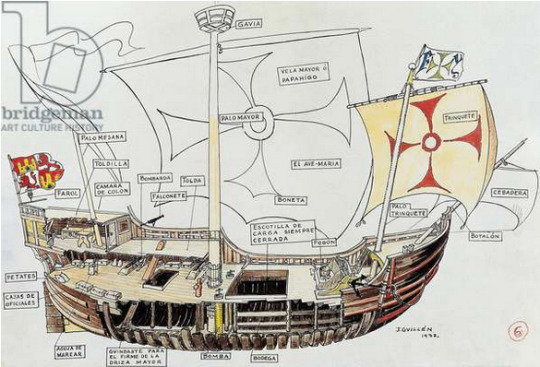
Reconstruction of a Caravel of Christopher Columbus. Drawing by Julio Guillen Y Tato (1897-1972), 1932 (x)
Vasco da Gama's ships were also caravels. Of the three ships with which Columbus sailed along Central America in 1492, the Pinta and the Nina were probably caravels, the Santa Maria was probably a Nao. He gave the speed in his diary as up to 15 Italian miles per hour, which is about 11 knots. So it was pretty fast, if you can call it that. The usual Portuguese caravels had a carrying capacity of 50 to 60 tonnes, and later a much higher capacity. Thus, the ships of the Magellan also included larger four-masted caravels.
Because of its advantages over Holland, the caravel construction method soon became the determining construction method for wooden ships throughout Europe. Thus, in 1460, the first "Karvielscheepen" were built in Holland in considerable sizes for 400 loads (800t) carrying capacity with a length of about 43 m and a width of 12 m. In the first half of the 16th century, Lübeck and Gdansk took a leading position in the construction of large Caravel ships.

Square-rigged caravels (here caravela armada) fighting and escorting naos in India Armadas, in: Livro de Lisuarte de Abreu, c. 1565 (x)
A little later, however, the carrack and later the galleons took over and the caravels became less and less important. But not completely, because as a caravela armada - an armed caravel - it remained in service with the Portuguese until the 18th century and was nothing other than a larger cross sail caravel. The Portuguese used it as an escort on the Brazil and India routes as well as to protect shipping with the Atlantic islands, it was used to monitor the Straits of Gibraltar, but also for coastal protection and anti piracy.
79 notes
·
View notes
Text

"Ullswater from Seldom Seen" (in the Lake District, England), by Nicholas Stephen Phillips. British artist & Blues singer/guitarist, born 1948. About the artist (via E. Stacy-Marks Fine Art Dealers, NS Phillips): "Nicholas Stephen Phillips was born on 18th February 1948 in London, England. He was the fourth child of Harry Raines Phillips, a Sculptor, and Kathleen Phillips, a Painter. Also descended from the 18-19th Century Landscape Painter Giles Firman Phillips. He became particularly interested in Landscape painting whilst working in the Conservation Department at Leeds City Art Gallery and Temple Newsam House in the early 1970’s.
He learnt how to paint by studying the works of J.M.W. Turner, John Atkinson Grimshaw, James McNeil Whistler, and the German Painter Casper Friedrich. All of these Artists have greatly influenced him. His early work is mainly in oils, from the 1970’s to the mid 1990’s. Most of these pictures are of the Leeds vicinity in West Yorkshire, where Phillips lived from 1951 - 1990.
In the mid 1980’s, Phillips’ other career as a “Blues” singer and guitarist took off, with him turning professional in 1986 as a solo artist under the name “Steve Phillips”. This period culminated with him forming a band with Mark Knopfler of “Dire Straits” fame, titled “The Notting Hillbillies”. This band is still in existence but only performing on special occasions.
Since 1990, Phillips has resided in the Robin Hood’s Bay area of North Yorkshire, where he has developed his pastel painting technique and still performs in the UK and Europe on his guitar singing the blues."
4 notes
·
View notes
Text
anonymous asked: most wanted faces?

putting this below the cut as it's a long list! please note that this is not an end all be all, there's plenty of gorgeous fcs i've probably missed
also, with this list now we're officially open for apps!
jesse williams, sinqua walls, ricky whittle, jordan fisher, shemar moore, idris elba, alfie enoch, lakeith stanfield, trevante rhodes, rege-jean page, john boyega, aldis hodge, daniel ezra, michael b jordan, michael evans behling, lucien laviscount, mason gooding, keith powers, kofi siriboe, jonathan daviss, laz alonso, omari hardwick
darren barnet, booboo stewart, charles melton, simu liu, daniel dae kim, nico hiraga, mackenyu, henry golding, ross butler, kento yamazaki, keita machida, sean kaufman, will sharpe, alex landi, yoshi sudarso, derek luh, lewis tan, ben levin, conrad ricamora, drew ray tanner
evan mock, charles michael davis, bob morley, manny jacinto, anthony keyvan, timothy granaderos, jordan buhat, brandon perea, clayton cardenas
danny pino, oscar isaac, edgar ramirez, michael trevino, michael cimino, william levy, froy gutierrez, alejandro speitzer, taylor zakhar perez, sean teale, santiago segura, laith ashley, diego tinoco, pedro pascal, tommy martinez, jd pardo, angel bismark curiel, henry zaga, andre lamoglia, carloto cotta, andrew matarazzo, david castaneda, ryan guzman
cody christian, blair redford, forrest goodluck, baske spencer, gabriel luna, gil birmingham, jaime gomez, martin sensmeier, kiowa gordon, rudy youngblood
kj apa, alex aiono, david strathairn, dennis chun, jason momoa, kalama epstein, jason scott lee, keahu kahuanui, thomas weatherall
rahul kohli, sendhil ramaruthy, avan jogia, aramis knight, chaneil kular, dev patel, hasan minhaj, kumail nanjiani, manish dayal, nick sagar, riz ahmed, siharth malhotrra, raymond ablack, rami malek
chace crawford, oliver jackson cohen, penn badgley, steven strait, eric dane, jacob elordi, max carver, charlie carver, stephen amell, robbie amell, chris hemsworth, liam hemsworth, jake gyllenhaal, paul rudd, justin hartley, matt barr, max thieriot, charlie hunnam, travis van winkle, alan ritchson, jon bernthal, tom hardy, connor jessup, grant show, pierce brosnan, zane phillips, kit connor, casey deidrick, thomas doherty, drew starkey, phil dunster, dylan minnette, jack champion, henry cavill, dylan sprayberry, jeremy allen white, tyler lawrence grey, matt bomer, jonathan bailey, rainer dawn, zack nelson
2 notes
·
View notes
Text
A non-Fox News source for the aid delivery the Houthis attacked:
Greek ship attacked in Red Sea by Houthis arrives in Aden with cargo
LONDON/ADEN/ATHENS, Feb 20 (Reuters) - The Greek-flagged bulk cargo vessel Sea Champion arrived in the southern Yemeni port of Aden on Tuesday after being attacked in the Red Sea in what appeared to have been a mistaken missile strike by Houthi militia, shipping and military sources said.
Shipping risks have escalated due to repeated drone and missile strikes in the Red Sea and Bab al-Mandab Strait by the Iran-aligned Houthis since November. U.S. and British forces have responded with several strikes on Houthi facilities but have so far failed to halt the attacks.
The U.S. military's Central Command said late on Tuesday that the Houthis had fired two anti-ship ballistic missiles at the Sea Champion, a U.S.-owned bulk carrier. It said one of the missiles detonated near the ship causing minor damage.
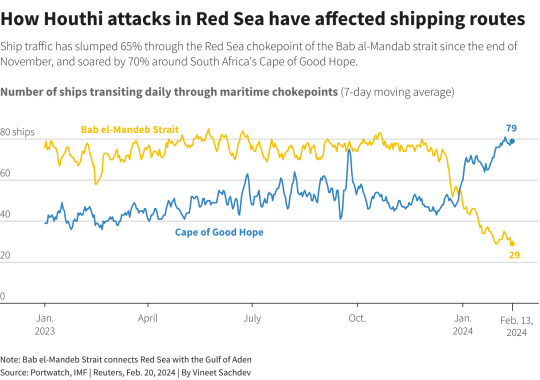
The Sea Champion, which was ferrying corn from Argentina to Aden, the seat of Yemen's internationally recognised government, was attacked twice on Monday, with a window damaged but no crew injuries, Greek shipping ministry sources said.
The U.S. Central Command said the Sea Champion has delivered humanitarian aid to Yemen 11 times in the past five years.
A port source in Aden and a separate shipping source said the vessel was unloading part of its cargo of some 9,229 tonnes of corn in Aden, before it heads to the northern Yemeni port of Hodeidah, an area controlled by the Houthis, where it was meant to discharge the remaining load of some 31,000 tonnes.
The port source in Aden, who declined to be identified, said the attack on the vessel was a mistake. A separate port source in Hodeidah, who also declined to be identified, said the Houthis informed them that the attack was not intentional.
Houthi officials could not be immediately reached for comment.
The vessel's Athens-based operator Mega Shipping and Greek shipping ministry officials declined to comment on the vessel's arrival.
The Sea Champion was anchored in Aden port with its last position updated at 1211 GMT, according to data from ship tracking and maritime analytics provider MarineTraffic.
The Houthis, who control Yemen's most populous regions, have attacked vessels with commercial ties to the United States, Britain and Israel, shipping and insurance sources say.
CONCERNS GROW OVER RUBYMAR
Despite retaliatory Western attacks on them in Yemen, the Houthis have vowed to continue striking ships linked to Israel in solidarity with Palestinians until Israeli forces stop their war in the Gaza Strip.
So far, no ships have been sunk nor crew killed from the Houthi attacks in a sea lane accounting for about 12% of global maritime traffic.
Nonetheless, concerns were mounting over the fate of the Rubymar ship, which was hit by missiles in the Gulf of Aden on Sunday, despite the crew evacuating onto another vessel.
In a maritime advisory seen by Reuters, commercial ships were cautioned to stay away from the area of the abandoned vessel amid fears it might sink.
A U.S. defense official said the vessel had not sunk.
Stephen Cotton, General Secretary of the International Transport Workers' Federation (ITF), the leading union organisation for seafarers, said the Rubymar attack should be a wake-up call "to immediately prioritise seafarers' safety, before we see human lives lost on the Red Sea".
He said an immediate, permanent ceasefire in the war between Israel and Gaza's ruling Palestinian Islamist group Hamas was a critical step towards guaranteeing safe transit through the Red Sea.
There was also alarm that commercial ships could face new perils including the possibility of sea mines being deployed, maritime security sources said.
The U.S. military's Central Command (CENTCOM) conducted strikes on various targets on Monday and Tuesday, including what was believed to be the first unmanned underwater vessel (UUV) used since Houthi attacks began.
"These actions will protect navigational rights and freedoms and make international waters safer," CENTCOM said.
While many ships are diverting around southern Africa to avoid the Red Sea, some have continued to sail through.
French container shipping group CMA CGM said on Tuesday its Jules Verne vessel had transited the Red Sea under French naval escort, after suspending crossings for security risks earlier this month.
The European Union on Monday launched a naval mission to the Red Sea to "safeguard freedom of navigation" there amid hopes of more protection and support for commercial shipping.
France has provided navy escorts in recent weeks for some shipping traffic including French-linked vessels
4 notes
·
View notes
Text
Birthdays 5.18
Beer Birthdays
Jeff Bagby (1974)
James Watt (1982)
Five Favorite Birthdays
Brooks Robinson; Baltimore Orioles 3B (1937)
Bertrand Russell; English philosopher, mathematician, writer (1872)
Big Joe Turner; blues singer (1911)
Kai Winding; jazz trombonist (1922)
Chow Yun-Fat; actor (1955)
Famous Birthdays
Joan Blackman; actor (1938)
Matthew Brady; photographer (1822)
Richard Brooks; film director (1912)
Frank Capra; film director (1897)
Perry Como; pop singer (1912)
Wreckless Eric; pop singer (1954)
Tina Fey; comedian, actor, writer (1970)
Margot Fonteyn; ballerina (1919)
Karl Goldmark; composer (1830)
Walter Gropius; German architect (1883)
Oliver Heaviside; English physicist (1850)
Dwayne Hickman; actor (1934)
Reggie Jackson; Oakland Athletics/NY Yankees RF (1946)
Jack Johnson; pop singer (1975)
Omar Khayyam; Persian mathematician, poet, philosopher (1048)
Bill Macy; actor (1922)
Don Martin; cartoonist (1931)
Robert Morse; actor (1931)
Fred Perry; tennis player (1909)
Pernell Roberts; actor (1928)
James Stephens; actor (1951)
George Strait; country singer (1952
Rick Wakeman; rock keyboardist (1949)
Meredith Wilson; composer (1902)
2 notes
·
View notes
Text

Out of the gutter and into your arms, the FREE monthly Lobotomy Room cinema club (devoted to Bad Movies for Bad People) returns on Thursday 16 May 2024! And boy, do we have a shocker for you this time – 1965 hagsploitation thriller Die! Die! My Darling!
Chic, cosmopolitan and modern, American Patricia Carroll (Stefanie Powers) is living her best life. Upon arriving in London to marry her suave Brit fiancé Alan (Maurice Kaufmann), Carroll seeks closure by visiting Mrs. Trefoile, the grieving mother of her former boyfriend Stephen who died under tragic circumstances years earlier. Big mistake! Mrs. Trefoile turns out to be a terrifying religious fundamentalist and vengeful psychopath who most definitely does not have Patricia’s best interests at heart. To be fair, Patricia should have suspected Mrs. Trefoile was evil. She resides in a Gothic lair populated by freaky menacing servants (including a young Donald Sutherland and Yootha Joyce!). When we’re first introduced to her, Mrs. Trefoile is sitting in the kind of wicker peacock chair favoured by Morticia Addams. And when dinner is served, it’s vegetarian! (“We do not use condiments of any kind in this house, Patricia! God's food should be eaten unadorned!” she adds). Adding to the fun considerably, the bible-bashing Mrs. Trefoil is portrayed by the fabulous cast-against-type debauched hellraising wild woman of the American stage and campy gay icon, Miss Tallulah Bankhead, in her final film role. (She died in 1968).
In truth, Die! Die! My Darling! is arguably rarely “scary”, but with its sadistic emphasis on Patricia’s torment, it packs a nasty jolt. As the AllMovie website concludes, “Die! Die!'s thrills may be cheap, but they're thrills nonetheless.” And if you’re a fan of hagsploitation horror like What Ever Happened to Baby Jane?, Strait-jacket and Hush … Hush, Sweet Charlotte, this one is a must! So, join us to watch Die! Die! My Darling! over cocktails at Fontaine’s bar in Dalston on 16 May! Details.
#die die my darling#tallulah bankhead#hagsploitation#horror movies#lobotomy room#bad movies for bad people#bad movies we love#kitsch#lgbtqia#lobotomy room film club#hammer horror#bad movies rule#shock value#stefanie powers
6 notes
·
View notes
Text

The Music of My Life
“Music can heal the wounds which medicine cannot touch.” ~ Debasish Mridha
I remember when I fell in love with music, rock music. It was when my very cool uncle Lynn returned home from Vietnam. He had a reel-to-reel tape deck and giant headphones (hence the picture). This is when I first heard Iron Butterfly, King Crimson, Yes, Led Zeppelin, Warm, to name a few… I was hooked.
My Mom and stepdad loved music too. Our road trips always included loud signing with the windows down. I will never forget the Christmas when I received my first stereo. I still know my first two vinyl albums; Supertramp ‘Breakfast in America’ (a favorite even today) and John Lennon / Yoko Ono ‘Milk & Honey’.
Many Friday and Saturday nights were spent playing bumper pool in my friend Stephen's basement. We had a car 8 track player wired to a set of speakers. The only 8 track we had was Bad Company ‘Burning Sky’, I still know every word to every song.
Eventually, we purchased a CD player for the house. My mind was blown when I listened to the full digital recording that was Dire Straits ‘Brother in Arms’, I am sure our neighbors enjoyed it too.
In the event that someone under the age of thirty-five is reading this, I have some explaining to do. Here is a brief history of pre recorded music in my lifetime. In my early childhood vinyl LPs were what we listened to at home. The only option for the car was the 8 Track. If you don’t know what an 8 Track tape is, imagine a case twice as wide and twice as tall as your iPhone. It made up for its clunkiness by pausing and changing tracks in the middle of every other song (usually during the best part of the song). Finally, cassettes arrived, they were roughly half the size, played on both sides and you could record LPs on to them (I know the technology is overwhelming). CDs ushered in the digital age.
Believe it or not, we used to hear a song we liked on the radio, actually drive to the music store, browse the CDs, find the one with the song on it, pay $12.99 (if it was on sale), hope the rest of the songs were good, spend and hour recording it on to cassette so that we could listen to it in the car, this was a far cry from “Alexa, shuffle the hits of the eighties…”
I worked at Musicland when I was in college. After school, my first 'real' job was to manage the one in Brookwood Village in Birmingham. This store was the number one Jazz and Classical location in the entire 2000 store chain. We played it every morning and I learned to love these genres as well. David Sanborn ‘Straight to the Heart’, David Lanz ‘Cristofori’s Dream’ and Nigel Kennedy ‘Vivaldi’s Four Seasons’ are all still in my rotation.
It was here that I met the sweetest older man, Stan. He walked the mall a few times a week and he knew and loved classical music like no one else I have ever known. He was in the middle of the long and arduous task of buying CDs to replace his LPs as they were being released. I had his list and anytime a we received one of the recordings on CD, I would give him a call. We often had lunch in the food court, he taught me about classical composers, I taught him about Stevie Ray Vaughn.
Stan stopped walking the mall. I left two messages about new arrivals and he didn’t show. I was concerned and missed my friend. A few days later a man entered the store and asked for me, I introduced myself. He told me that he was Stan’s son and that his father had passed away. I never even knew that he had cancer. I will never forget the next words from his mouth…” my dad wanted me to tell you how much he appreciated your talks and you calling him, and he wanted you to have this.” He handed me an LP wrapped in brown paper. We embraced, he departed. I went to the back, shed a tear and unwrapped a pristine copy of ‘Meet the Beatles’ on Apple records, still in cellophane. I have never even had it appraised, to me it is priceless.
“Sing to the LORD a new song, for he has done marvelous things” ~Psalm 98:1
3 notes
·
View notes
Text
Books Read in 2022
January
The Red-Haired Girl from the Bog: The Landscape of Celtic Myth and Spirit by Patricia Monaghan
The Unpassing by Chia-Chia Lin
North and South by Elizabeth Gaskell
The Hakawati by Rabih Alameddine
February
The Final Girl Support Group by Grady Hendrix
The Beauty and the Terror: The Italian Renaissance and the Rise of the West by Catherine Fletcher
The Desolations of Devil’s Acre (Miss Peregrine’s Peculiar Children #6) by Ransom Riggs
Eifelhelm by Michael Flynn
The Time Traveler’s Guide to Elizabethan England by Ian Mortimer
March
The Wives of Henry VIII by Antonia Fraser
The Salt Path by Raynor Winn
The Watchmaker of Filigree Street by Natasha Pulley (reread)
The Lost Future of Pepperharrow by Natasha Pulley
April
The Parted Earth by Anjani Enjeti
Homeland Elegies by Ayad Akhtar
Once There Were Wolves by Charlotte McConaghy
The Last Blue by Isla Morley
Lone Stars by Justin Deabler
All the Young Men: A Memoir of Love, AIDS, and Chosen Family in the American South by Ruth Coker Burns
I Know Why the Caged Bird Sings by Maya Angelou
May
The Vanishing Half by Brit Bennett
If Beale Street Could Talk by James Baldwin
Klara and the Sun by Kazuo Ishiguro
Station Eleven by Emily St. John Mandel (reread)
As Long as Grass Grows: The Indigenous Fight for Environmental Justice, from Colonization to Standing Rock by Dina Gilio-Whitaker
LaRose by Louise Erdrich
A History of Native American Land Rights in Upstate New York by Cindy Amrhein
June
Four Treasures of the Sky by Jenny Tinghui Zhang
Member of the Family: My Story of Charles Manson, Life Inside His Cult, and the Darkness That Ended the Sixties by Dianne Lake and Deborah Herman
These Silent Woods by Kimi Cunningham Grant
Darkwater: Voices from Within the Veil by W.E.B. Dubois
Take My Hand by Dolen Perkins-Valdez
A Marvelous Light by Freya Marske
Catch and Kill: Lies, Spies, and a Conspiracy to Protect Predators by Ronan Farrow
July
No Exit by Taylor Adams
The Wanderers by Meg Howrey
A Tall History of Sugar by Curdella Forbes
Peach Blossom Spring by Melissa Fu
Calypso by David Sedaris
My Antonia by Willa Cather
The First English Actresses: Women and Drama 1660-1700 by Elizabeth Howe
English Animals by Laura Kaye
Their Eyes Were Watching God by Zora Neale Hurston
August
An American Marriage by Tayari Jones
The Sea Around Us by Rachel Carson
Exhalation: Stories by Ted Chiang
The Ice Cream Queen of Orchard Street by Susan Jane Gilman (reread)
The Latecomers by Helen Klein Ross
Unlikely Animals by Annie Hartnett
The Book of Longings by Sue Monk Kidd
September
The Island of Missing Trees by Elif Shafak
The Invention of Wings by Sue Monk Kidd
Country Roots: The Origins of Country Music by Douglas B. Green
Drive Your Plow Over the Bones of the Dead by Olga Tokarczuk
Golden Gates: The Housing Crisis and a Reckoning for the American Dream by Conor Dougherty
Sexing the Cherry by Jeanette Winterson (reread)
J.M. Barrie and the Lost Boys: The Real Story Behind Peter Pan by Andrew Birkin
The Lost Ones by Anita Frank
October
A History of Wild Places by Shea Ernshaw
When No One is Watching by Alyssa Cole
The Corn Maiden and Other Nightmares by Joyce Carol Oates
The Reddening by Adam Nevill
My Heart is a Chainsaw by Stephen Graham Jones
November
It Happened in the Smokies... A Mountaineer’s Memories of Happenings in the Smoky Mountains in Pre-Park Days by Gladys Trentham Russell
Pastoral Song: A Farmer’s Journey by James Rebanks
Jesus Land by Julia Scheeres
I Was Told There’d be Cake: Essays by Sloane Crosley
The Postmistress by Sarah Blake
The Thousand Crimes of Ming Tsu by Tom Lin
December
Floating Coast: An Environmental History of the Bering Strait by Bathsheba Demuth
Disappearing Earth by Julia Phillips
Four Lost Cities: A Secret History of the Urban Age by Annalee Newitz
The Bloody Chamber and Other Stories by Angela Carter (reread)
The Tenant of Wildfell Hall by Anne Bronte (reread)
Mrs. Death Misses Death by Salena Godden
Moon of the Crusted Snow by Waubgeshig Rice
#books in 2022#books#booklr#reading list#just finished moon of the crusted snow#i haven't even thought about which were my favorite books that i read this year yet
8 notes
·
View notes
Text
i wish i had a car i wanna go see the ocean ): all the people fishing for mackerel in saint stephens.... go to fundy trail... saw some fossils last year... or go see all the jellyfish in the norththumberland strait
2 notes
·
View notes